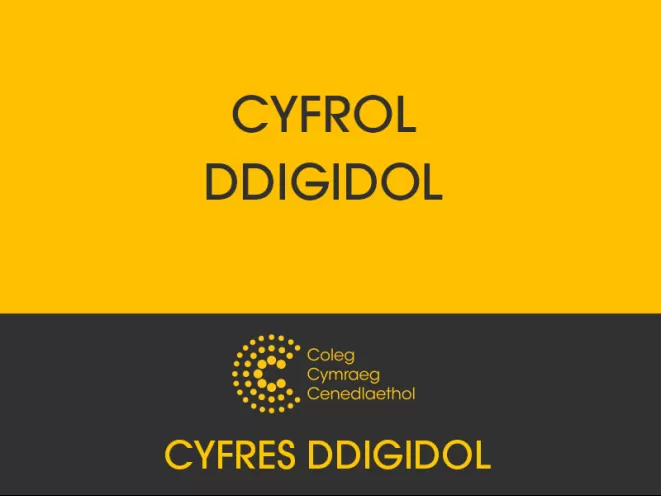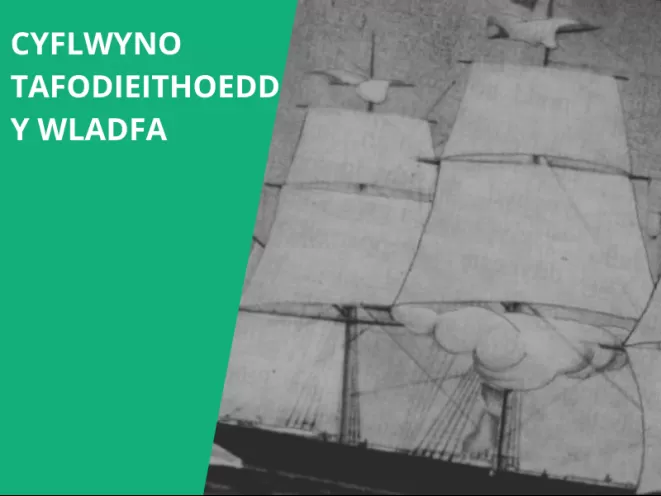Datblygwyd y deunydd yma i gydfynd â modiwl CP0110 Cyflwyniad i Gynllunio Gofodol, modiwl lefel 4 ym Mhrifysgol Caerdydd. Mae'r modiwl yn edrych ar darddiad cynllunio gofodol ym Mhrydain ac yn esbonio sut mae'r system bresennol wedi esblygu. Rhoddir sylw arbennig i'r themâu allweddol sy’n dod i'r amlwg o gynllunio Prydeinig: ei ymddangosiad fel gweithgaredd llywodraeth leol; effaith proffesiynoldeb a meddylwyr 'llawn gweledigaeth'; newid ideolegau gwleidyddol; a newidiadau yng nghraddfeydd gofodol cynllunio.
Modiwl Cyflwyniad i Gynllunio Gofodol (CP0110)
Modiwl Theori ac Ymarfer Cynllunio (CP0312)
Datblygwyd y deunydd yma i gydfynd â modiwl CP0312 Theori ac Ymarfer Cynllunio, modiwl lefel 6 ym Mhrifysgol Caerdydd. Rhestr Darlithoedd: Amlinelliad o gynnwys y modiwl 1a. Theori ac Arfer 1b. Modelau proffesiynoldeb 2. Proffesiynoldeb fel ffordd o ddeall y byd 3. Rhesymoledd a Chynllunio 4. Cynllunio ac ansicrwydd 5. Cynllunio a Threfn Adborth ac arweiniad ar gwrthgyferbynnu Jacobs a Schön Budd y Cyhoedd Cyfiawnder a Chynllunio: 1
Crefft y Stori Fer – Saunders Lewis (gol.)
Casgliad o sgyrsiau rhwng Saunders Lewis ac awduron straeon byrion yn 1947-8, cyfnod pwysig yn natblygiad y stori fer Gymraeg. Ceir darlun drwy'r sgyrsio o fywydau'r llenorion, y gymdeithas oedd yn ysbrydoliaeth i'w llên a'r hyn a'u hysgogodd i ysgrifennu.
Crefft y Stori Fer Heddiw
Trafodaeth gyfoes ar ffurf y stori fer Gymraeg. Cyflwynir safbwyntiau chwe awdur cyfoes a fu'n cyhoeddi ym maes y stori fer yn ystod y blynyddoedd diwethaf sef Fflur Dafydd, Jon Gower, Aled Islwyn, Caryl Lewis, Llŷr Gwyn Lewis a Mihangel Morgan er mwyn taflu goleuni ar y modd y mae'r stori fer yn cael ei hystyried heddiw.
Cristnogaeth a Chenedlaetholdeb – J. R. Jones
Trafodaeth gan yr athronydd Cymreig, J. R. Jones am berthynas dirywiad addoli Cristnogol yng Nghymru â chrebachiad hunaniaeth y Cymry a'r iaith Gymraeg.
Cyflwyno Tafodieithoedd y Gymraeg: Canllawiau i Actorion a Sgriptwyr
Amcan yr adnodd hwn yw helpu actorion a sgriptwyr Cymraeg, nid yn unig i ymgyfarwyddo â gwahanol amrywiadau tafodieithol, ond hefyd i’w defnyddio yn ymarferol wrth eu gwaith bob dydd. Ceir yma glipiau sain wedi eu recordio’n Ionawr 2015 gan Dr Iwan Rees o dafodieithoedd yn Nyffryn Banw yn Sir Drefaldwyn. Mae’r atodiadau’n cynnwys canllawiau manwl gan Dr Iwan Rees ar gyfer pob clip gan dynnu sylw at elfennau ieithyddol penodol (ar eirfa, seiniau, gramadeg a’r oslef, er enghraifft). Oherwydd resymau hawlfraint, bydd angen mewngofnodi er mwyn cael mynediad i nifer o'r cilipau fideo.
Cyflwyno Tafodieithoedd y Wladfa
Croeso i Cyflwyno Tafodieithoedd y Wladfa, adnodd gan Dr Iwan Wyn Rees, Prifysgol Caerdydd. Yr amcan yn syml yw cyflwyno am y tro cyntaf amrywiadau tafodieithol cyfoes y Wladfa Gymreig ym Mhatagonia. Cewch gyfle yma i wrando ar Gymraeg llafar gwahanol fathau o siaradwyr o’r Wladfa, ac i gyd-fynd â’r clipiau hynny, ceir nodiadau manwl yn tynnu sylw at amrywiaeth o nodweddion tafodieithol.
Cyfweliadau gyda Chynhyrchwyr a chyfarwyddwyr
Cyfres o gyfweliadau gyda chynhyrchwyr a chyfarwyddwyr allweddol ym maes y cyfryngau yng Nghymru: Aron Evans Endaf Emlyn John Hefin Naomi Jones Paul Jones Peter Edwards Sue Jeffries Gwawr Lloyd Rhodri Talfan Davies Sara Ogwen Williams Ed Thomas
Cymraeg Gwaith
This is a collection of scripts and audio clips for Work Welsh learners at Entry level that go hand in hand with units 1-10. These resources reinforce classroom learning (from staff in higher and further education) and are suitable for beginners. These resources were developed under the auspices of the National Center for Learning Welsh as part of a project co-ordinated by the Coleg Cymraeg Cenedlaethol.
Cymru a'r Rhyfel Canmlynedd – A. D. Carr
Cyflwyniad i'r Rhyfel Canmlynedd (1337-1453) a'i berthynas â Chymru a geir yn y gyfrol hon . Roedd gan filwyr o Gymru rannau canolog yn y rhyfel hwn rhwng Lloegr a Ffrainc, a hynny ar y ddwy ochr. Ystyrir hefyd effeithiau'r Rhyfel Canmlynedd ar Gymru ei hun.
A Raid i'r Iaith ein Gwahanu – J. R. Jones
Araith o'r 1960au gan yr athronydd Cymreig J. R. Jones, am yr hollt rhwng y rhai sy'n siarad Cymraeg a'r di-Gymraeg yng Nghymru a sut mae cau'r bwlch heb danseilio'r iaith Gymraeg ei hun. Cyhoeddwyd hefyd fel rhan o gyfrol
Ac Onide – J. R. Jones
Yma, mae J. R. Jones yn ymateb i argyfyngau dynol y ceir sôn amdanynt yn y Beibl ac i'r argyfyngau dynol yn ein hoes ni a gynhyrfodd feddylwyr tebyg i Wittgenstein, Simone Weil a Tillich. Ceir hefyd ffeil sain o J. R. Jones ei hun yn areithio. Teitl yr araith yw 'I Ti y Perthyn ei Ollwng', sef Rhan Tri: 3 o Ac Onide.







